CDC Director Visits Health Programs in Tanzania and Uganda
Summary
- CDC Director Dr. Rochelle Walensky, MD, MPH visited Tanzania (including Zanzibar) and Uganda in late July 2022 to see firsthand how CDC’s in-country technical support and global partnerships are driven by science, data, and best practices.
- This, her first international trip since becoming CDC director, inspired her as she saw “how we and CDC are so essential and revered” for the agency’s public health work around the world.
- “It was really just inspiring to see the educational work that we were doing and how it translates into better health security,” Dr. Walensky said.
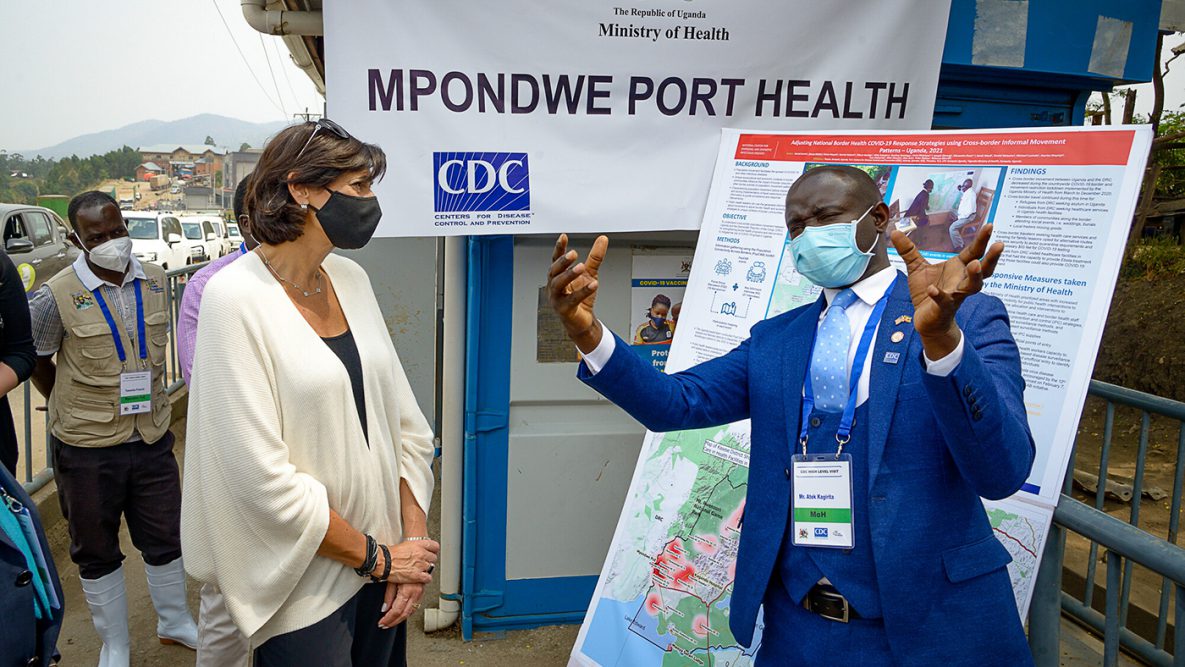
Atek Kagirita (right), deputy incident commander in Uganda’s Ministry of Health (MOH), tells CDC Director Walensky (left) about collaboration between the Uganda MOH, Baylor-Uganda, and the U.S. Centers for Disease Control and Prevention (CDC) to improve border screening and services at Mpondwe. It is along Uganda’s border with the Democratic Republic of the Congo (DRC). Mpondwe in western Uganda is one of the busiest borders between Uganda and DRC. The high volume of cargo and people passing through the border increases the risk of regional spread of infectious diseases. In 2019 an Ebola case was imported to Uganda through Mpondwe from Beni, DRC. Photo by Chris Lubega / U.S. Embassy in Kampala

CDC Director Walensky visits Kagondo Hospital in Uganda’s Kasese District, near the border with the Democratic Republic of the Congo. The hospital, with CDC support, provides comprehensive HIV care with the laboratory serving as a regional hub for lab services to the neighboring health care facilities. The hospital has been at the forefront in the management of epidemics including Ebola and COVID-19. Motorcycle riders (pictured) are key to linking hospitals like Kagondo to centralized testing necessary for HIV identification and care and for timely identification of viral hemorrhagic fevers and other outbreak threats. Photo by Chris Lubega / U.S. Embassy in Kampala

CDC Director Walensky meets with Dr. Julius Lutwama of the Uganda Virus Research Institute (UVRI) at Zika Forest, which has been a protected field research station of UVRI since 1936. The 25-acre forest has rich biodiversity and is home to over 40 types of mosquitoes. In 1947, researchers at UVRI were able to isolate the RNA of a flavivirus collected at Zika Forest, which was named the Zika virus, and which was subsequently identified from a collected Aedes africanus mosquito sample. Photo by Chris Lubega / U.S. Embassy in Kampala
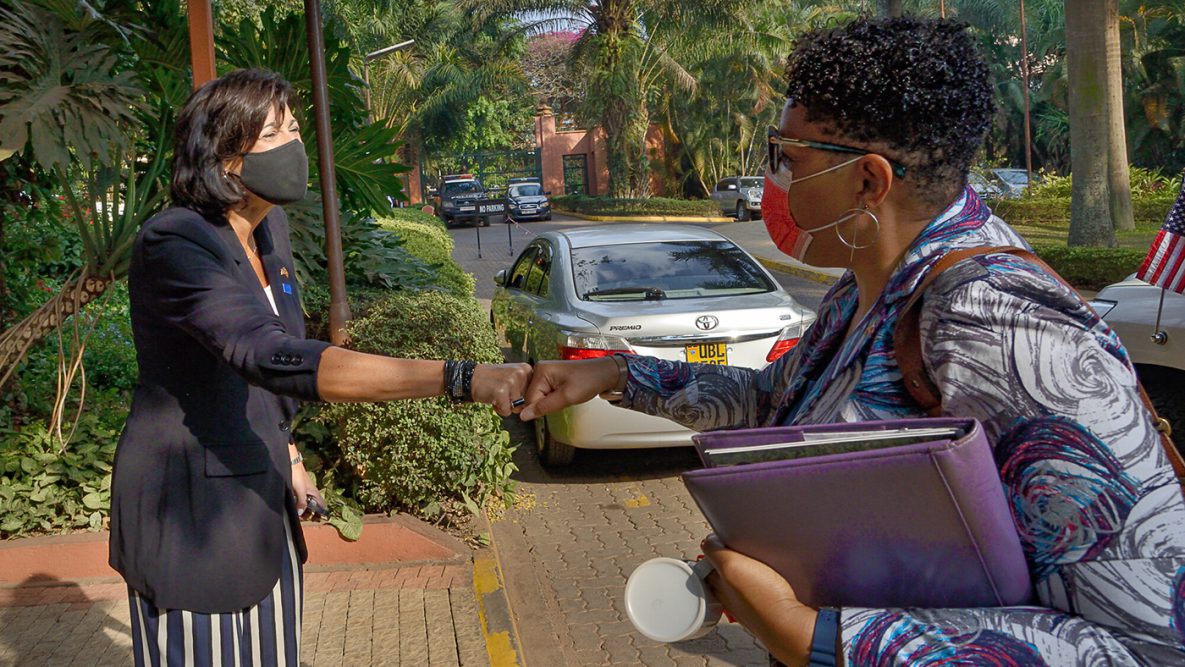
In her first overseas visit as CDC Director, Dr. Walensky (left) greets Natalie E. Brown, U.S. Ambassador to Uganda in Kampala. For over three decades, CDC has engaged in technical collaboration and provided direct financial support to advance science-based public health initiatives designed to help the Government of Uganda (GOU) handle its unique health challenges, improve the health of its citizens and protect U.S. citizens and economic interests by controlling communicable diseases and building long-term partnerships. CDC began working in Uganda in 1991 and established a country office in 2000. Today, CDC works with partners to strengthen Uganda’s capacity to prevent, detect, and respond to public health threats such as COVID-19. CDC works with the Ministry of Health (MOH) and other partners to deliver evidence-based health services to prevent, control, and treat HIV/AIDS. CDC also supports tuberculosis (TB) and malaria control efforts, and maternal and child health services, including vaccination. Photo by Chris Lubega / U.S. Embassy in Kampala
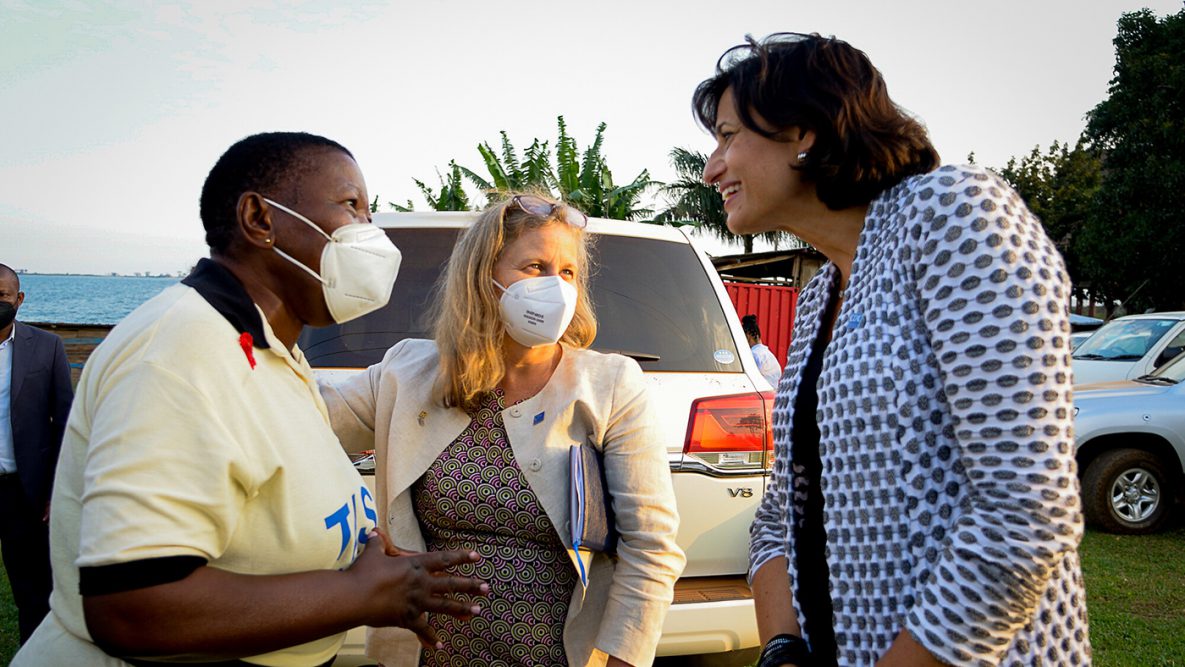
CDC’s Dr. Lisa Nelson (center) introduces CDC Director Walensky (right) to Dr. Noerine Kaleeba, patron and founder of The AIDS Support Organization (TASO). TASO was started in Uganda in 1987 by 16 people personally affected by HIV and AIDS. Their mission is to prevent HIV, restore hope, and improve the quality of life of people living with HIV and their families. TASO has 11 Service Centers of Excellence in Uganda. The organization has received PEPFAR funding since 2004 and serves about a tenth of all people living with HIV in Uganda. Photo by Chris Lubega / U.S. Embassy in Kampala
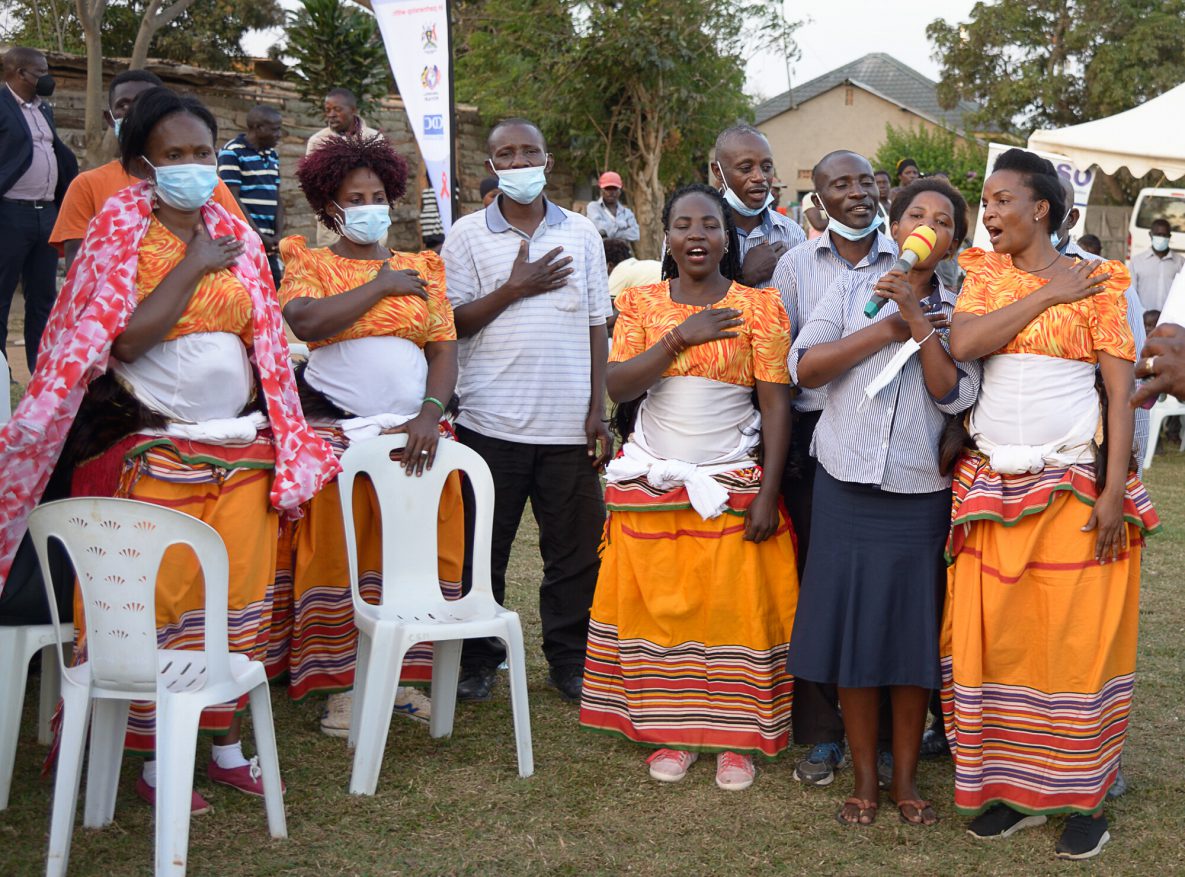
Members of The AIDS Service Organization (TASO) sing the TASO anthem. TASO was started in Uganda in 1987 by 16 people personally affected by HIV and AIDS. Their mission is to contribute to the process of preventing HIV, restoring hope, and improving the quality of life of people living with HIV and their families. TASO has 11 Service Centers of Excellence in Uganda. Photo by Chris Lubega / U.S. Embassy in Kampala
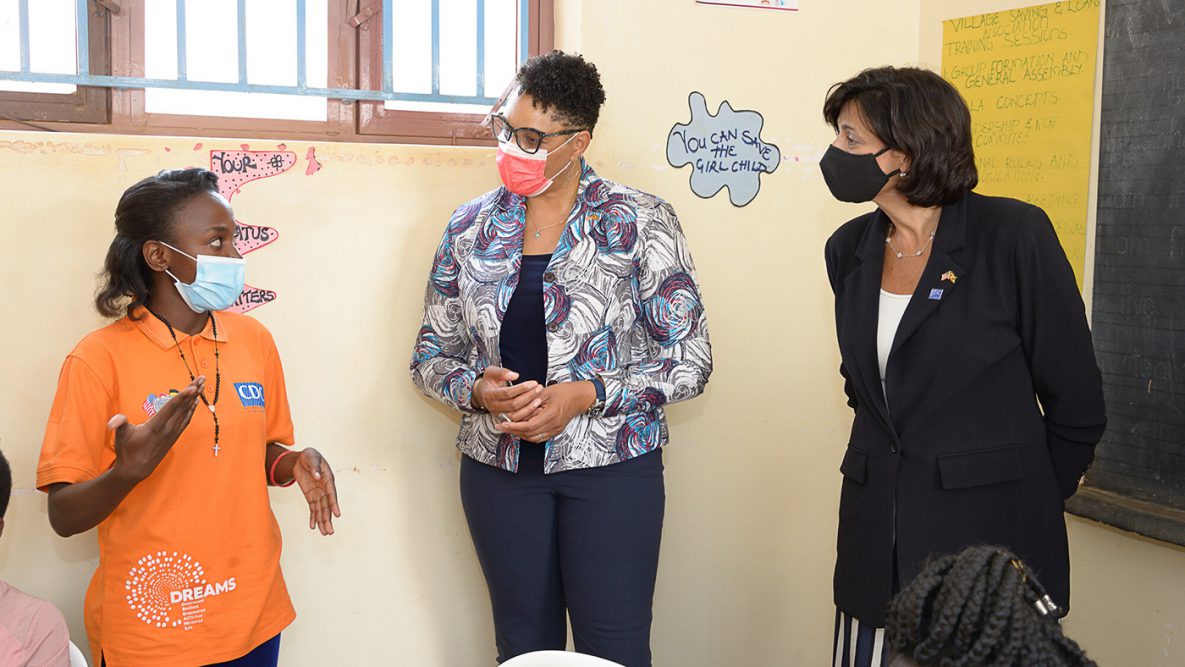
U.S. Ambassador Natalie E. Brown (center) and CDC Director Walensky (right) hear about HIV intervention at the Nsumbi Safe Space in Kampala, Uganda. The 2020 Uganda Population-Based HIV Impact Assessment (UPHIA 2020) showed that HIV prevalence (2.9%) is three times higher among young women ages 15-24 as compared to their male counterparts (0.8%) even as the overall number of new HIV infections continue to decline in Uganda. Importantly, adolescents and young people (ages 10-24 years) account for more than one third (34.8 %) of Uganda’s population. With funding from PEPFAR through CDC, the Kampala region DREAMS program was launched in 2020 to deliver a combined package of health and socio-economic empowerment programs to address structural vulnerabilities to HIV with the goal of reducing new infections among adolescent girls and young women. Photo by Chris Lubega / U.S. Embassy in Kampala
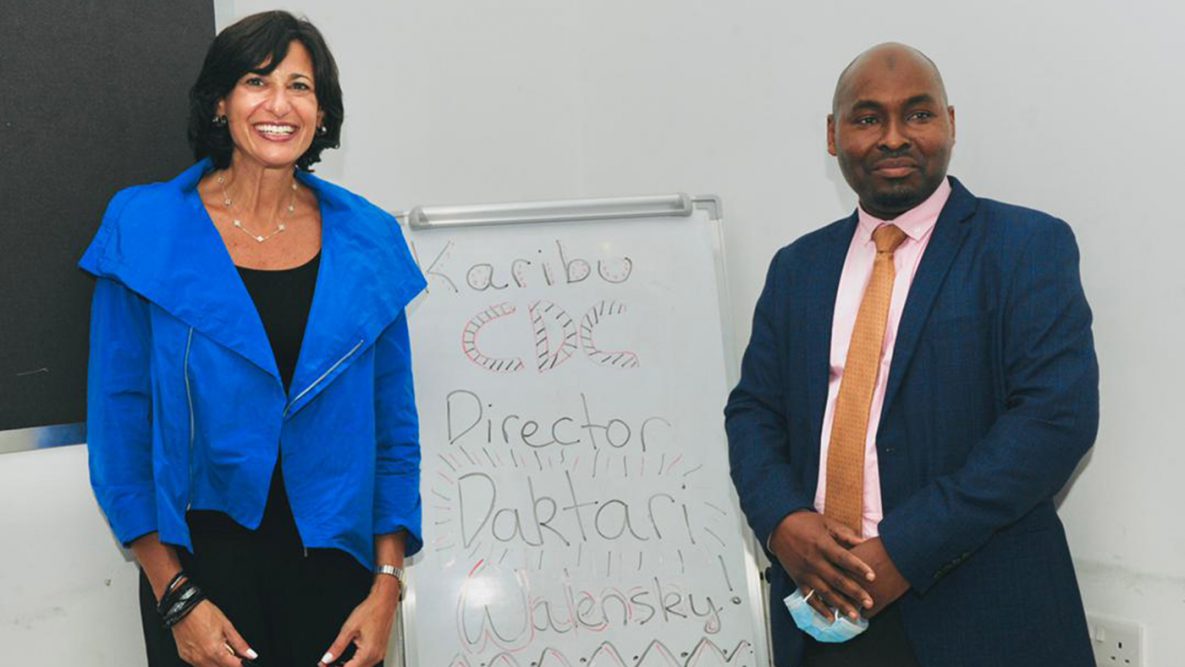
CDC Director Walensky (left) and Dr. Ali Nyanga (Director of Preventive Services for Zanzibar Ministry of Health) stand by a sign welcoming Dr. Walensky to the Emergency Operations Center in Stone Town, Zanzibar. Dr. Nyanga is a graduate of the Field Epidemiology and Laboratory Training Program (FELTP) advance level course. He also trained in Atlanta through CDC’s Public Health Emergency Management Fellowship Program. Photo by Mohammed Mvumbag / U.S. Embassy Tanzania
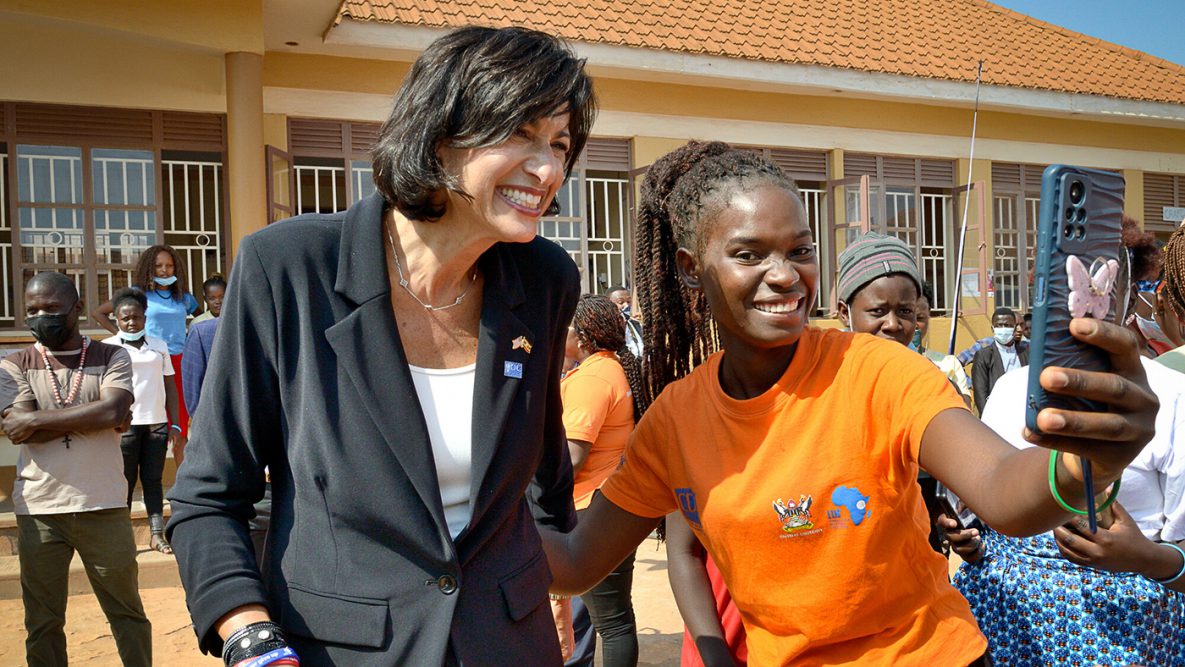
CDC Director Walensky poses for a photo with a program leader at the Nsumbi Safe Space in Kampala, Uganda. HIV prevalence (2.9%) is three times higher among young women ages 15-24 as compared to their male counterparts (0.8%) even as the overall number of new HIV infection continues to decline in Uganda. Importantly, adolescents and young people (ages 10-24 years) account for more than one third (34.8 %) of Uganda’s population. The Nsumbi Safe Space currently serves 4,847 adolescent girls and young women ages 10-24. Photo by Chris Lubega / U.S. Embassy, Kampala
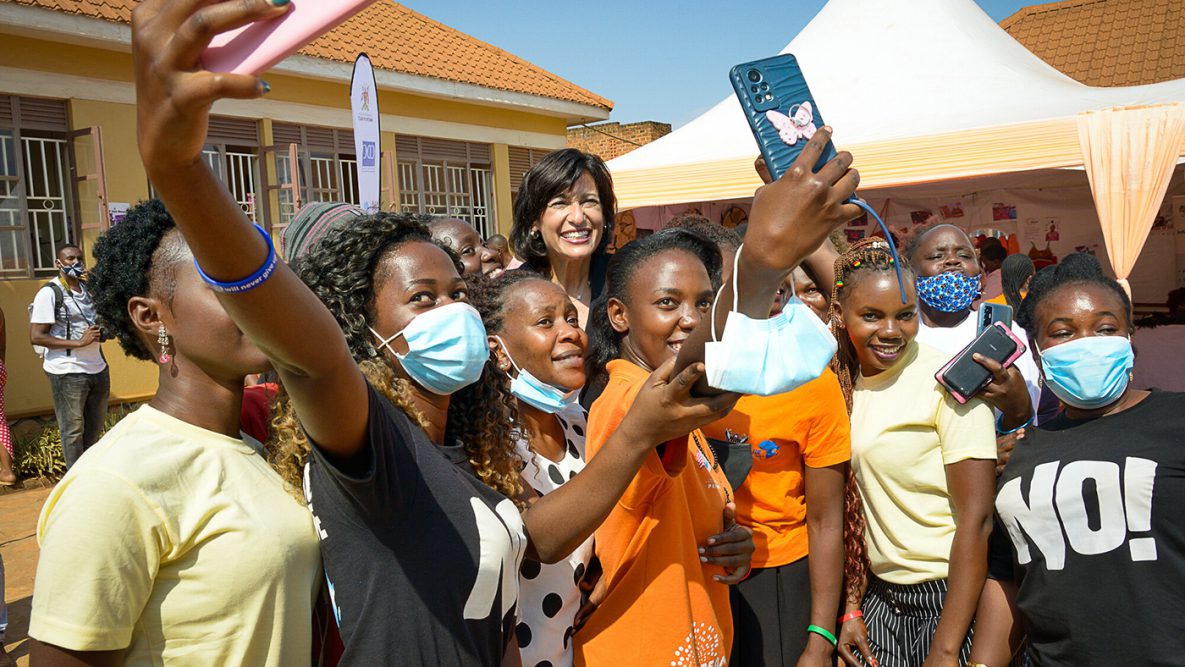
CDC Director Walensky poses for a photo with program leaders and participants at the Nsumbi Safe Space in Kampala, Uganda. A total of 45,000 participants have been enrolled and will receive age-specific services and programs. Photo by Chris Lubega / U.S. Embassy in Kampala
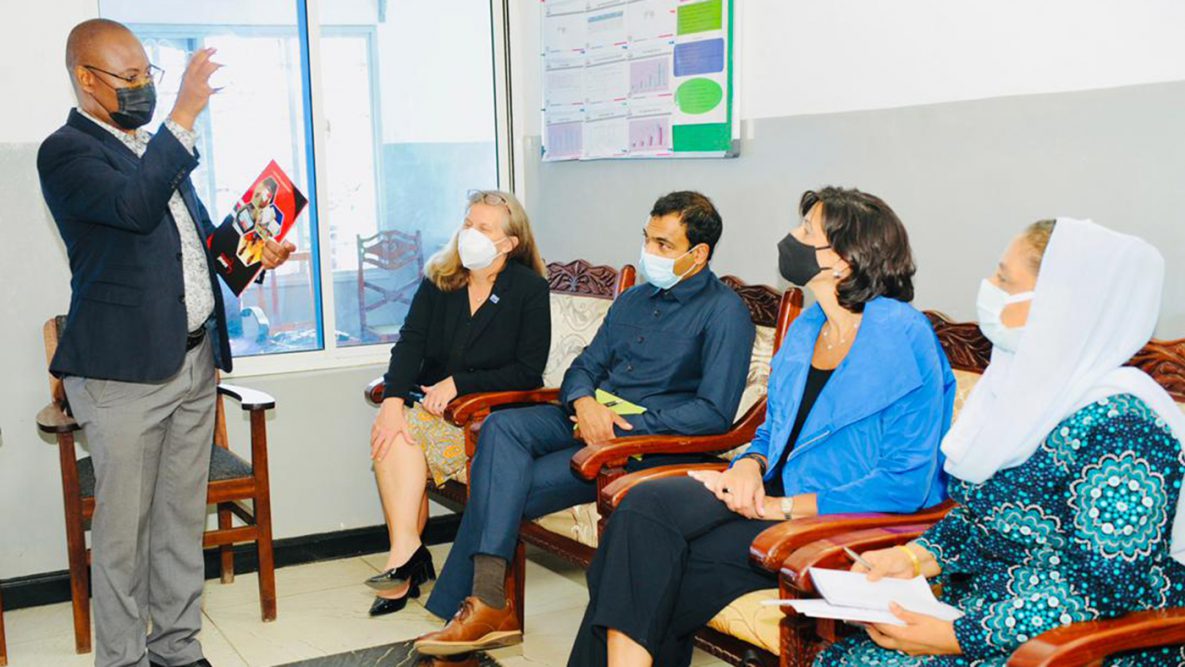
Dr. Edwin Kilimba (left, standing) project director of AMREF Tanzania – an implementing partner of CDC Tanzania, describes the work of his group to CDC’s Dr. Lisa Nelson (seated), Dr. Mahesh Swaminathan (country director, CDC Tanzania), CDC Director Walensky and H.E. Madame Shadya Karume (former first lady of Zanzibar and Founder and Owner of ZAYEDESA – the Zanzibar Youth Education Environment Development Support Association) Photo by Mohammed Mvumbag / U.S. Embassy Tanzania
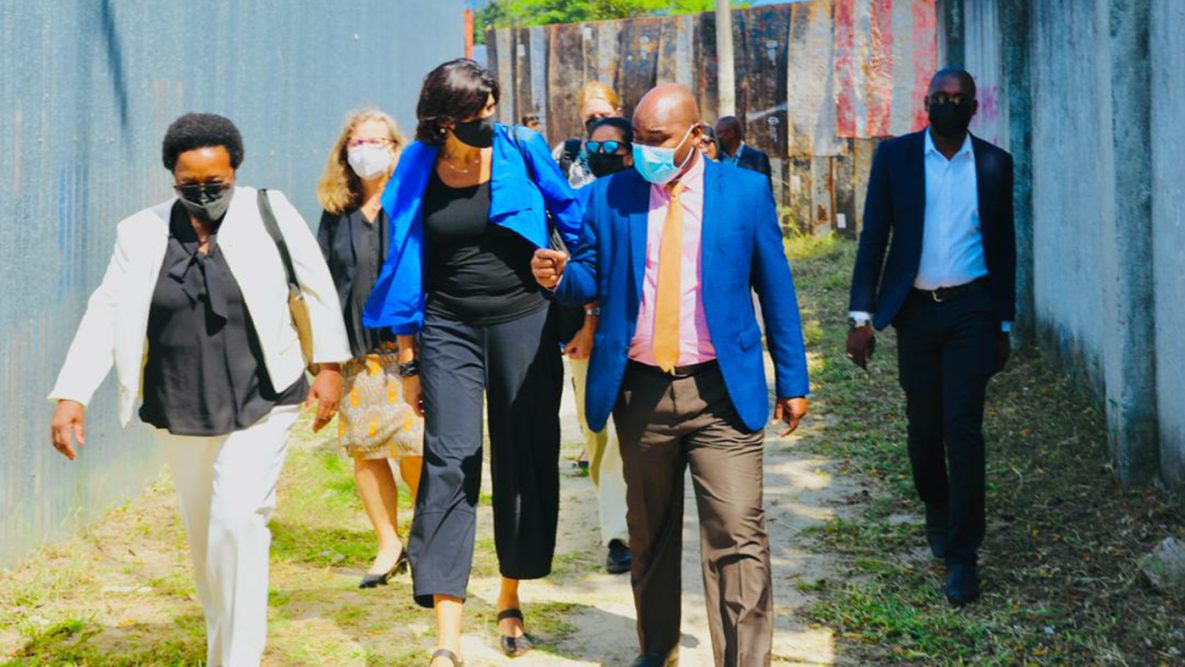
(Left to right) Dr. Wangeci Gatei (DGHP Program Director, CDC Tanzania), Dr. Lisa Nelson (Acting Director, Global Health Coordination Unit, CDC), CDC Director Walensky and Dr. Ali Nyanga (Director of Preventive Services for Zanzibar Ministry of Health) walk to the Zanzibar Public Health Emergency Operations Center (ZPHEOC) in Stone Town, Zanzibar. Photo by Mohammed Mvumbag / U.S. Embassy Tanzania
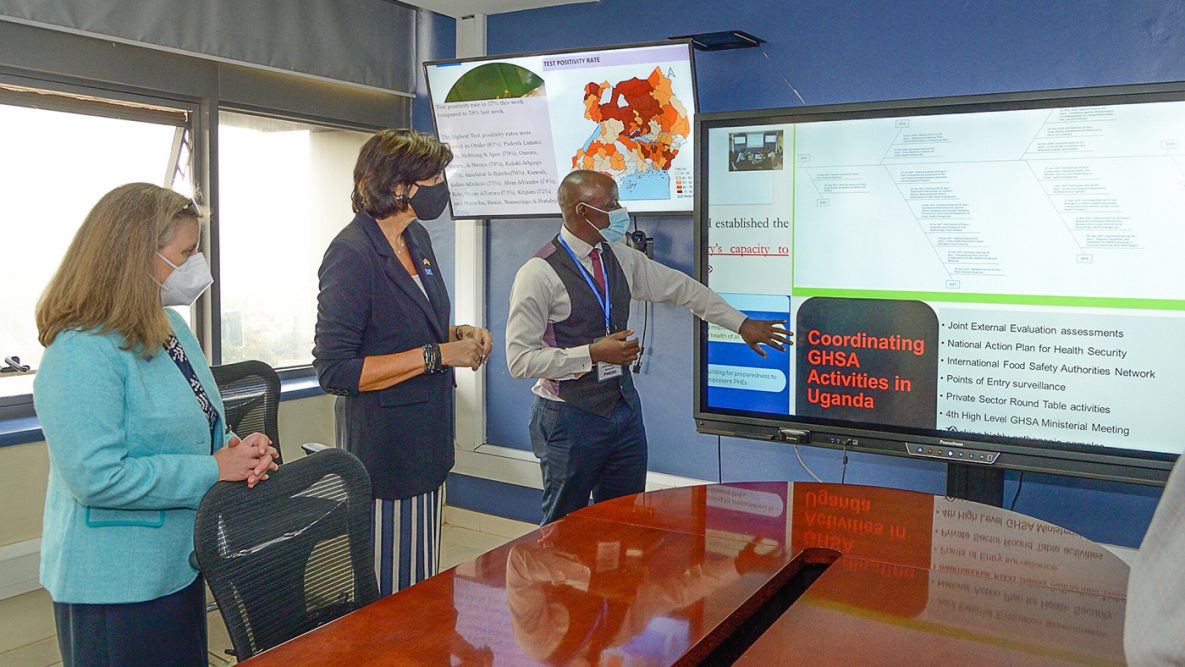
Joshua Kayiwa, information manager, Uganda Public Health Emergency Operations Center (PHEOC), briefs CDC Director Dr. Walensky (center) and CDC’s Dr. Lisa Nelson (left) in the PHEOC. The PHEOC has coordinated responses to public health events in Uganda, including outbreaks of Ebola and COVID-19, among many others. The National PHEOC also oversees operations of six regional PHEOCs. CDC continues to support development of Uganda’s PHEOC through financial and technical support. CDC continues to work with Uganda’s National Institute of Public Health to establish the institute as a "one-stop public health shop," which has been a win-win partnership for workforce development, systems strengthening, and responding to public health emergencies. Photo by Chris Lubega / U.S. Embassy in Kampala